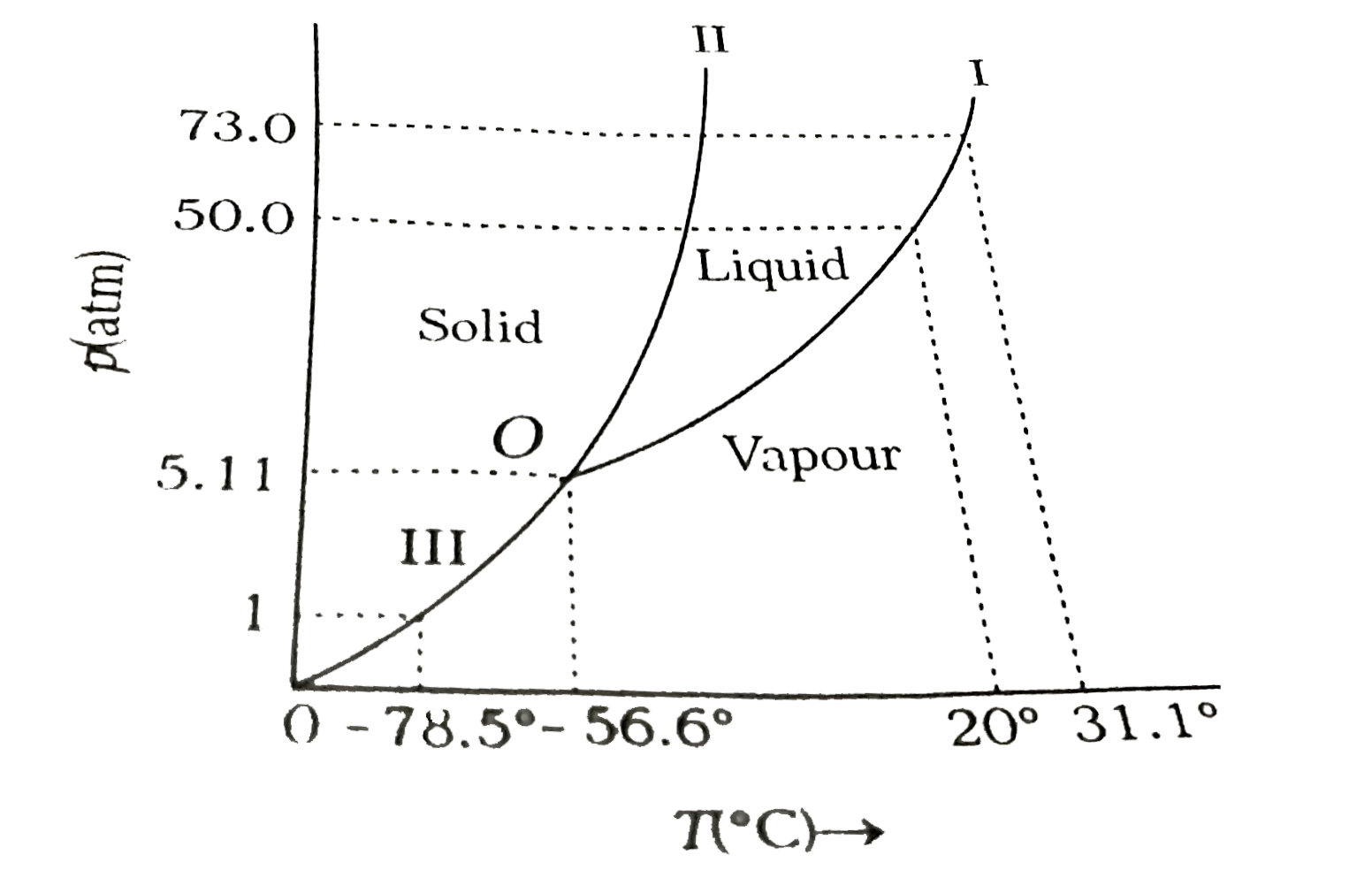(a) Based on the nature of intermolecular forces, classify the following solids:
Sodium sulphate, Hydrogen
(b) What happens when CdCl2 is doped with AgCl?
(c) why do ferrimagnetic substances show better magnetism than antiferromagnetic substances?
(a) Sodium sulphate-Ionic solids
Hydrogen-Molecular solid (non-planar)
(b) In ionic solid of AgCl, if CdCl2 is added as an impurity, they will create vacancies. 2Cd2+ ion replaces onn 2Ag+ ion to maintain electrical neutrality, and hence, 1Cd2+ creates one vacancy.
(c)
Topper's Solved these Questions
- BOOK - XII BOARD PREVIOUS YEAR PAPER ENGLISHCHAPTER - XII BOARDSEXERCISE - CHEMISTRY (THEORY)31videos
XII BOARDS
- BOOK - XII BOARD PREVIOUS YEAR PAPER ENGLISHCHAPTER - XII BOARDSEXERCISE - C.B.S.E CLASS XII37videos
XII BOARDS
- BOOK - XII BOARD PREVIOUS YEAR PAPER ENGLISHCHAPTER - XII BOARDSEXERCISE - SET-II32videos
XII BOARDS
- BOOK - XII BOARD PREVIOUS YEAR PAPER ENGLISHCHAPTER - SAMPLE PAPER 2019EXERCISE - SECTION: D1videos
SAMPLE PAPER 2019
Similar Questions
(a) Based on the nature of intermolecular forces, classify the following solids:
Silicon carbide, Argon
(b) ZnO turns yellow on heating. Why?
(c) What is meant by groups 12-16 compounds? Give an example.View SolutionGive reasons :
(i) In stoichiometric dfects. NaCl exhibits Schottky defect and not Frenkel defect.
(iii) Ferrimagnetic substances show better magnetism than antiferromagnetic substances.View Solution(a) Calculate the number of unit cells in 8.1g of aluminium if it crystallizes in a f.c.c., structure. (Atomic mass of AI =27gmol−1)
(b) Given reasons:
(i) In stoichiometric defects, NaCl exhibits Schottky defect and not Frenkel defect.
(ii) Silicon on droping with Phosphorus forms n-type semiconductor.
(iii) Ferrimagnetic substances show better magnetism than antiferromagnetic substances.View Solution(a) Based on the nature of the intermolecular foces, classify solids benzene and silver.
(b) AgCl shows frenkel defect while NaCl does not. Give reason.
(c) What type of semi-conductor is formed when Ge is doped with Al ?View Solution(a) Based on the nature of the intermolecular foces, classify solids benzene and silver.
(b) AgCl shows frenkel defect while NaCl does not. Give reason.
(c) What type of semi-conductor is formed when Ge is doped with Al ?View Solutionwhich of the following statements are correct ?
(a)Ferrimagnetic substance lose ferrimagnetism on heating and become paramagnetic
(b)Ferrimagnetic substance do not lose ferrimagnetism on heating and Remain ferromagnetic
(c)Antiferromgnetic substance have domain structures similar to ferromagnetic substance and their magnetic moment are not cancelled by each other
(d)Antiferromagnetic substance have domain structures similar to ferromagnetic substance and their magnetic moment are not cancelled by each otherView SolutionAnswer the following questions based on the P – T phase diagram of CO2:
(a) CO2 at 1 atm pressure and temperature–60∘C is compressed isothermally. Does it go through a liquid phase ?
(b) What happens when CO2 at 4 atm pressure is cooled from room temperature at constant pressure ?
(c) Describe qualitatively the changes in a given mass of solid CO2 at 10 atm pressure and temperature –65∘C as it is heated up to room temperature at constant pressure.
(d) CO2 is heated to a temperature 70∘C and compressed isothermally. What changes in its properties do you expect to observe ?
 View Solution
View SolutionClassify the following solids in different categories based on the nature of the inter molecular forces : sodium sulphate, copper, benzene, urea, ammonia, water, zinc sulphide, diamond, rubedium, argon, silicon carbide.
View SolutionClassify the following solids in different categories based on the nature of intermolecular forces operating in them: ltbr> Potassium sulphate, tin, benzene, urea, ammonia, water, zinc sulphide,graphite, rubidium , argon, silicon carbide.
View SolutionExplain the following observations:
(a) Azide ion (N3) react with 2− bromopentane thousand times faster than with neopentyl bromide in a SN2 reaction through former is a secondary halide while latter is primary.
(b) What will happen to the stereochemistry of product of the following reaction:

(c) What will happens to the rate if the concentration of alkyl bromide in (b) is doubled?
(d) Wha will happen to the rate if the concentration of azide ion in (b) is doubled?
(e) How the sign of optical rotation of reactant and product are related in (b)
(f) When allowed to stand in dilute H2SO4 laevo-rotatory 2-butanol slowly loss optical activity.View Solution

